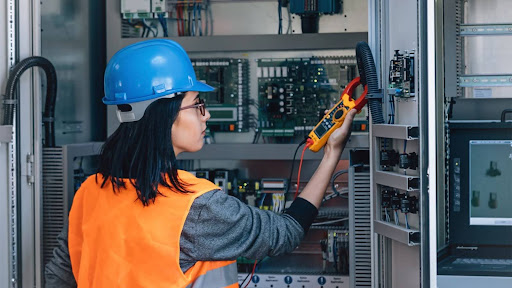
Today, we have the privilege of sitting down with Mark Shaw, a seasoned expert from Hawkeye Electric, to delve into the intricacies of electrical panels. With his extensive experience in the field, Mark brings a wealth of knowledge and valuable insights into the essential functions, safety measures, and future trends of electrical panels in both residential and commercial settings.
Can you explain an electrical panel and its primary functions in a residential or commercial building?
Mark Shaw: An electrical panel, often known as a breaker box or distribution board, is essential in residential and commercial buildings. It is the primary point where the external electricity supply is divided into subsidiary circuits while providing a protective fuse or circuit breaker for each circuit in a standard enclosure. It is the hub that manages and distributes electrical power throughout the building.
What are the main components of an electrical panel?
Mark Shaw: The main components of an electrical panel include the main breaker or lugs that control power for the entire panel, individual circuit breakers for each circuit, bus bars that distribute power to the circuits, and neutral and ground bars for connecting neutral and grounding wires. Each component plays a critical role in ensuring electricity’s safe and efficient distribution.
How should a homeowner or business owner safely access and navigate their electrical panel?
Mark Shaw: For homeowners or business owners to safely access and navigate their electrical panel, they should ensure the area around the panel has a minimum of three feet of access in front of it at all times and is dry, ensuring they are not standing in water. It’s important to use a flashlight rather than relying on the panel’s light source and always use insulated tools when approaching to take off any panel cover. They should always flip the breaker to the off position before inspecting or repairing any electrical issues, and if not qualified, always hire a qualified electrician to inspect or make repairs to any part of the electrical system.
What are the key things to look for when opening the panel cover?
Mark Shaw: When opening the panel cover, it’s key to look for tripped circuit breakers and signs of wear, damage, or burning around the circuit breakers or wires. Signs of corrosion or rust, loose or disconnected wires, and any unusual sounds like buzzing or hissing are also important to note. These are indicators that something may be wrong and might need professional attention.
How often should an electrical panel be inspected by a professional?
Mark Shaw: A professional electrician should inspect an electrical panel at least once every three to five years. This regular check ensures your system operates safely and efficiently and complies with local electrical codes. By preventing potential issues, these inspections ensure the longevity and reliability of your electrical system, giving you peace of mind.
What are the most critical safety tips when working with or near an electrical panel?
Mark Shaw: Critical safety tips when working with or near an electrical panel include keeping the panel area easily accessible and free from obstructions, never touching the panel with wet hands or while standing in water, and ensuring the panel is turned off with a sub-lock on the breaker that feeds the panel being worked on at all times. Safety should always be the top priority to prevent accidents and injuries.
What are the signs that something might be wrong with an electrical panel that warrants professional attention?
Mark Shaw: Signs indicating something might be wrong with the electrical panel that warrants professional attention include frequent tripping of breakers, unusual noises like buzzing or crackling from the panel, a burning smell, overheating electrical components, and visible signs of damage or tampering. These signs should be addressed promptly, as they can lead to more severe problems if ignored.
Are there new technologies or advancements in electrical panels that homeowners and business owners should be aware of?
Mark Shaw: Homeowners and business owners must stay updated with new technologies and advancements in electrical panels. For instance, smart circuit breakers and panels offer remote control and monitoring of electrical usage, providing insights into energy consumption and improving energy management. By embracing these advancements, you can make maintaining and monitoring your electrical systems easier, enhance overall safety and efficiency, and empower yourself with the latest knowledge.
What advice would you give homeowners and business owners about maintaining and understanding their electrical panels?
Mark Shaw: The most crucial advice for maintaining and understanding electrical panels is regularly scheduling professional inspections. This, along with familiarizing oneself with the panel layout and checking for any signs of damage or wear, can help prevent issues and ensure the safe operation of the electrical system.
What trends do you see in the future of electrical panels and overall electrical system design?
Mark Shaw: The future trends in electrical panels and overall electrical system design will likely focus on smart technologies, increased energy efficiency, and integration with renewable energy sources. There’s also a growing emphasis on safety features and automation in system monitoring and fault detection, underscoring the importance of staying updated with these advancements. As technology evolves, electrical systems will become more advanced, offering greater control, efficiency, and safety.
For more insights and professional advice, visit Hawkeye Electric’s website at www.hawkeyeelectric.com. With expert guidance from industry leaders, you can stay informed and ensure your electrical systems are in top-notch condition.

